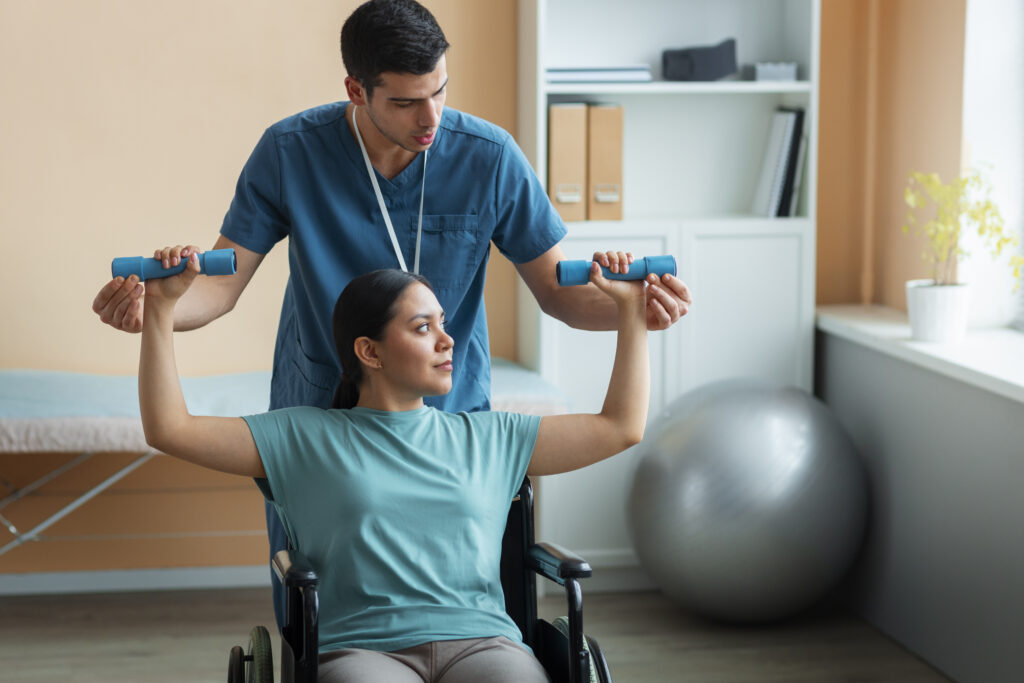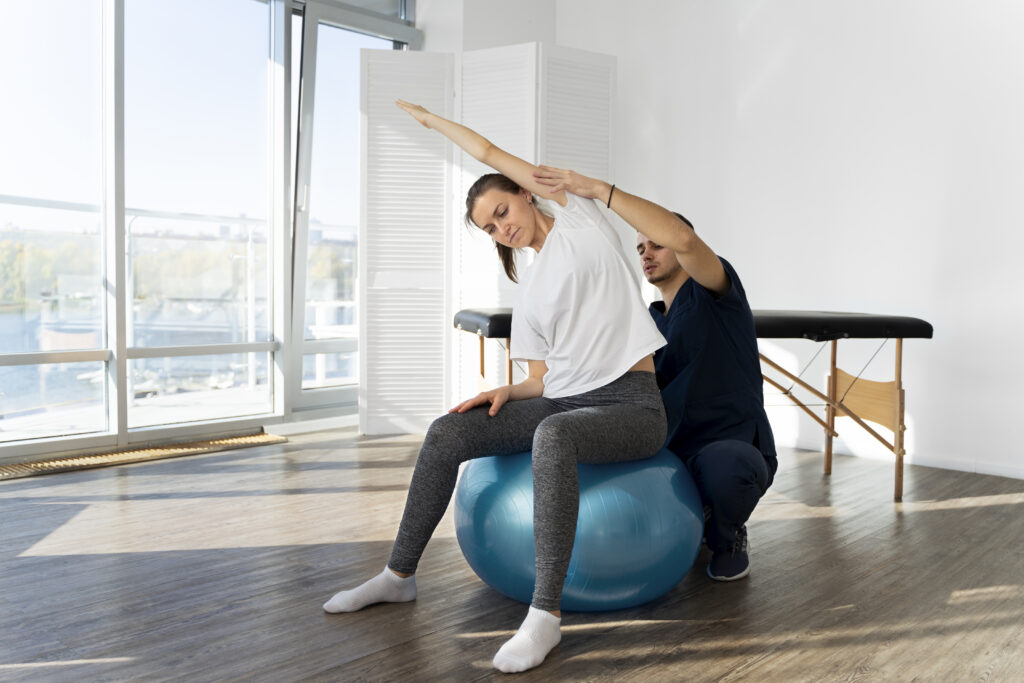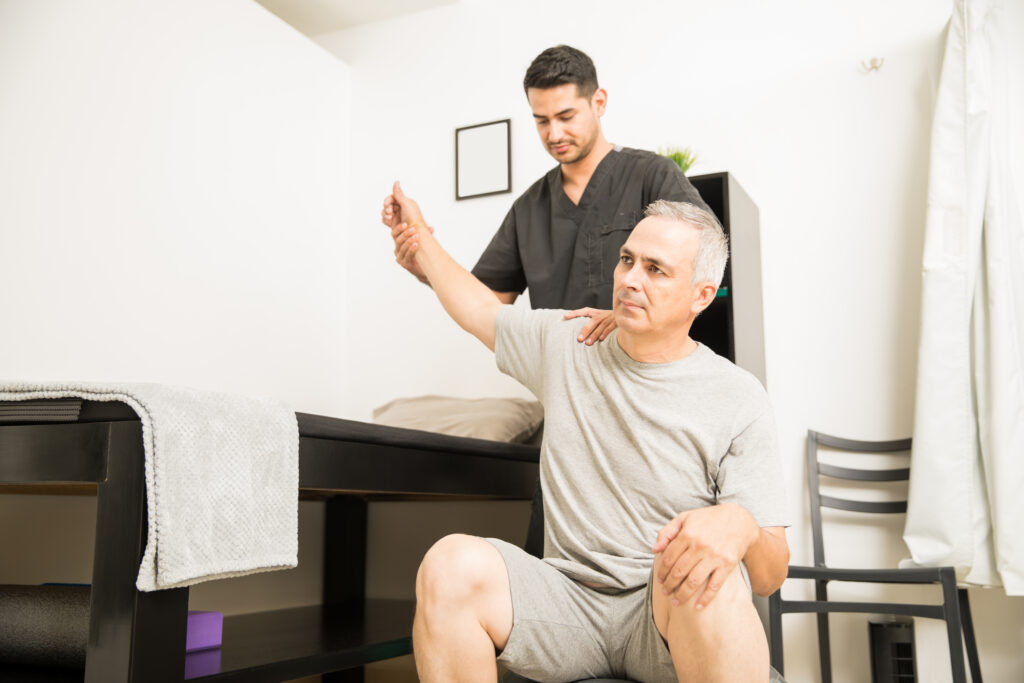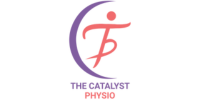Introduction
In recent years, the concept of receiving physiotherapy at home has gained significant popularity as individuals seek more personalized and convenient healthcare solutions. Physiotherapy, commonly known as physical therapy, involves therapeutic exercises and interventions to improve mobility, alleviate pain, and enhance overall well-being. This comprehensive guide explores the benefits, considerations, and essential aspects of physiotherapy at home : A Holistic Approach to Rehabilitation, shedding light on why it has become an increasingly preferred choice for many seeking rehabilitation.

The Shift to Physiotherapy at Home
Traditionally, individuals would visit clinics or rehabilitation centers for physiotherapy sessions. However, the landscape of healthcare has evolved, and the option to receive physiotherapy at home has emerged as a game-changer. This shift is driven by a desire for more personalized care and the recognition that the home environment can play a crucial role in the rehabilitation process.
Benefits of Physiotherapy at Home
1. Convenience Redefined
One of the primary advantages of opting for physiotherapy at home is the unparalleled convenience it offers. Patients no longer need to navigate through traffic or spend time commuting to a clinic. Instead, the physiotherapist comes to the patient, creating a stress-free and time-efficient environment for rehabilitation.
2. Personalized Care Tailored to You
Physiotherapy at home: A Holistic Approach to Rehabilitation allows for highly personalized care that is tailored to the individual’s specific needs. The physiotherapist can assess the home environment, taking into account factors that may impact the rehabilitation process. This personalized approach fosters a deeper understanding of the patient’s lifestyle and ensures that the treatment plan is aligned with their unique circumstances.

3. Accelerated Recovery in Familiar Surroundings
Studies have indicated that patients undergoing physiotherapy at home often experience faster recovery times. The familiar surroundings of home promote relaxation, reducing stress levels, and positively influence the healing process. Additionally, the continuity of care within the home environment can contribute to an accelerated rehabilitation journey.
Conditions Addressed by Physiotherapy at Home
Physiotherapy at home is a versatile approach that can effectively address various conditions. Here are some common scenarios where individuals may benefit from this personalized form of rehabilitation:
1. Post-Surgery Rehabilitation
Physiotherapy at home plays a vital role in post-surgery rehabilitation. Patients recovering from surgeries, such as joint replacements or orthopedic procedures, can benefit from targeted exercises and therapies administered in the comfort of their homes.
2. Chronic Pain Management
For individuals dealing with chronic pain conditions, physiotherapy at home provides a sustainable and holistic approach to pain management. The physiotherapist can assess and address pain triggers in the patient’s daily life, creating a comprehensive plan for long-term relief.

3. Sports Injuries Recovery
Athletes facing injuries can leverage the convenience of physiotherapy at home. The physiotherapist can assess the specific demands of the sport and design a rehabilitation program that seamlessly integrates into the athlete’s routine.
Setting Up Your Home Physiotherapy Space
1. Choosing the Right Equipment
Creating an effective home physiotherapy space involves selecting the right equipment. While the specific requirements may vary, common items include resistance bands, exercise balls, and any specialized tools recommended by the physiotherapist. The goal is to replicate the clinic environment to the extent possible.
2. Creating a Comfortable Environment
A comfortable and distraction-free environment is essential for successful physiotherapy at home. Adequate space, proper lighting, and minimal noise contribute to a setting conducive to focused rehabilitation. Consider designating a specific area for your exercises to create a dedicated and motivating space.
Selecting the Right Home Physiotherapist
1. Qualifications and Certifications
When selecting a home physiotherapist, it’s crucial to ensure they possess the necessary qualifications and certifications. A licensed and certified professional brings expertise and credibility to the rehabilitation process. Verify their credentials and inquire about their experience in providing physiotherapy at home.
2. Experience and Specializations
Consider the physiotherapist’s experience and any specializations relevant to your condition. An experienced professional with expertise in your specific area of rehabilitation can significantly impact the success of your home physiotherapy journey. Ask for references or testimonials to gauge their effectiveness.
Getting Started with Physiotherapy at Home

1. Initial Assessment
The home physiotherapy journey begins with an initial assessment. The physiotherapist will gather information about your medical history, and current condition, and assess your home environment. This assessment forms the foundation for a customized treatment plan tailored to your unique needs.
2. Tailored Treatment Plans
Based on the assessment, the physiotherapist develops a personalized treatment plan. This plan includes specific exercises, therapies, and interventions designed to address your unique needs and goals. The emphasis is on tailoring the approach to ensure the rehabilitation process aligns with your lifestyle and preferences.
3. Monitoring Progress
Regular monitoring of progress is a crucial aspect of physiotherapy at home. The physiotherapist stays engaged with you, adjusting the treatment plan as needed to ensure optimal results. This continuous feedback loop is vital for success and allows for timely modifications to enhance your rehabilitation journey.
Challenges and Solutions in Physiotherapy at Home
1. Lack of In-Person Supervision
One challenge in physiotherapy at home is the absence of in-person supervision. However, technology can bridge this gap through video calls and remote monitoring. Virtual sessions allow the physiotherapist to observe and guide you effectively, ensuring that you perform exercises correctly.
2. Communication Barriers
Clear communication is essential for successful physiotherapy at home. Establish open channels of communication with your physiotherapist through video calls, messaging, or virtual platforms. This helps address any concerns or questions you may have and ensures that the treatment plan remains relevant.
3. Adapting Exercises for Home Settings
Adapting exercises for the home environment requires creativity and collaboration. Your physiotherapist will provide detailed instructions and demonstrations, ensuring you can perform exercises correctly without the need for specialized equipment. Clear communication is key to overcoming any challenges in adapting exercises.
Success Stories: Real-life Examples
Highlighting real-life success stories adds a human touch to the article. These stories showcase how individuals have benefited from physiotherapy at home, creating relatability and inspiring confidence in readers considering this approach. Each success story provides a glimpse into the transformative power of personalized rehabilitation in familiar surroundings.
Tips for Maximizing the Benefits of Physiotherapy at Home
1. Consistency is Key
Consistency is paramount in physiotherapy at home. Follow the prescribed exercises and therapies consistently to achieve positive outcomes. Establishing a routine helps integrate rehabilitation seamlessly into your daily life, making it a sustainable part of your routine.
2. Open Communication with the Physiotherapist
Maintaining open communication with your physiotherapist is crucial. Any concerns or changes in your condition should be promptly communicated to ensure the treatment plan remains relevant and effective. Your physiotherapist is your partner in the rehabilitation journey, and collaborative communication enhances the success of the process.
3. Incorporating Exercises into Daily Routine
Integrating physiotherapy exercises into your daily activities enhances their impact. Simple stretches or movements incorporated into your daily routine contribute to ongoing progress and prevent regression. Work with your physiotherapist to identify opportunities for seamlessly integrating exercises into your daily life.
Addressing Common Misconceptions about Physiotherapy at Home
1. Limited Effectiveness
Contrary to common misconceptions, physiotherapy at home can be highly effective. Research indicates that when appropriately implemented, it can achieve outcomes comparable to traditional clinic-based rehabilitation. The key lies in the personalized and consistent approach tailored to individual needs.
2. Only for Severe Conditions
Physiotherapy at home is not limited to severe conditions; it can benefit individuals with various rehabilitation needs. From post-surgery recovery to managing chronic pain or addressing sports injuries, it offers a versatile and accessible healthcare option for a broad spectrum of conditions.
3. One-Size-Fits-All Approach
Dispelling the myth of a one-size-fits-all approach, physiotherapy at home emphasizes individualized care. Each treatment plan is tailored to your unique needs, ensuring targeted and effective rehabilitation. This approach recognizes the diversity of conditions and lifestyles, avoiding a generic or cookie-cutter approach to rehabilitation.
Future Trends in Physiotherapy at Home
1. Technological Advancements
The future of physiotherapy at home is intertwined with technological advancements. Virtual reality, wearable devices, and smart monitoring tools are expected to revolutionize the way rehabilitation is conducted at home. These technologies will enhance the overall experience, providing more insights and personalized interventions.
2. Telehealth Integration
Telehealth integration will play a pivotal role in the future of physiotherapy at home. Remote consultations, virtual assessments, and digital monitoring will enhance accessibility and further personalize the patient experience. This integration ensures that individuals can access quality healthcare from the comfort of their homes.
Case Study: A Comprehensive Physiotherapy at Home: A Holistic Approach to Rehabilitation Journey
Presenting a detailed case study provides a comprehensive view of the physiotherapy at home process. From the initial assessment to successful rehabilitation, the case study illustrates the positive impact of this approach. Real-life examples, challenges faced, and milestones achieved offer a tangible understanding of the transformative journey experienced by individuals.
The Role of Family and Support System
Acknowledging the importance of the family and support system in physiotherapy at home emphasizes the collaborative nature of the rehabilitation process. Involving family members can provide emotional and practical support, creating a positive and encouraging environment for the individual undergoing rehabilitation.
Cost Considerations in Physiotherapy at Home
Exploring the cost considerations associated with physiotherapy at home ensures transparency. While there may be initial investments in equipment, the overall cost-effectiveness and long-term benefits should be highlighted. Comparing the costs to traditional clinic-based physiotherapy and factoring in the convenience of home sessions provides a holistic view.
Conclusion
In conclusion, physiotherapy at home stands as a dynamic and patient-centric approach to healthcare. The personalized care, convenience, and positive outcomes make it a compelling option for individuals seeking rehabilitation in the comfort of their homes. As technology continues to evolve, the future holds even more promising developments in the field of physiotherapy at home. By embracing this holistic approach, individuals can embark on a transformative journey towards improved mobility, reduced pain, and enhanced overall well-being.
Frequently Asked Questions (FAQs)
- Is physiotherapy at home as effective as clinic-based therapy?
- Physiotherapy at home can be equally effective when tailored to the individual’s needs and diligently followed. The personalized nature of home sessions contributes to positive outcomes.
- Can anyone benefit from physiotherapy at home, or is it only for specific conditions?
- Physiotherapy at home is versatile and can benefit individuals with various rehabilitation needs, from post-surgery recovery to chronic pain management and sports injuries.
- How do I choose the right home physiotherapist for my needs?
- Select a home physiotherapist based on qualifications, certifications, and relevant experience. Consider their specialization and inquire about their approach to personalized care.
- What equipment is essential for setting up a home physiotherapy space?
- Common items for a home physiotherapy space include resistance bands, exercise balls, and any specialized tools recommended by the physiotherapist. The choice of equipment may vary based on individual needs.
- How does technology play a role in the future of physiotherapy at home?
- Technological advancements, including virtual reality and telehealth integration, are expected to enhance the effectiveness and accessibility of physiotherapy at home. These innovations will contribute to a more connected and personalized rehabilitation experience.
- Can physiotherapy help with chronic conditions like fibromyalgia or multiple sclerosis?
- Yes, physiotherapy can help manage symptoms and improve the quality of life for individuals with chronic conditions like fibromyalgia, multiple sclerosis, and others. Your physiotherapist will develop a tailored treatment plan to address your specific needs and goals.
- Are there any age restrictions for physiotherapy?
- Physiotherapy is suitable for individuals of all ages, from children to older adults. Whether you’re recovering from an injury, managing a chronic condition, or seeking to improve your overall mobility and function, physiotherapy can benefit people of any age group.
- How many physiotherapy sessions will I need?
- The number of sessions required depends on the nature and severity of your condition, as well as your response to treatment. Your physiotherapist will develop a treatment plan tailored to your specific needs and goals.
- Is physiotherapy painful?
- Physiotherapy techniques are generally not painful, although some discomfort may be experienced during certain exercises or manual therapy techniques. Your physiotherapist will work with you to ensure that treatment is comfortable and tolerable.
- Is home care physiotherapy suitable for all age groups?
- Yes, home care physiotherapy is suitable for patients of all age groups, from children to seniors.
Dr. Priyanka Bharadwaj (Physiotherapist)
CB Home Physiotherapist: Dr Priyanka Bharadwaj is one of the best female physical therapy experts in Khanpur, Delhi. She offers Physiotherapy at home in Khanpur and nearby areas. With a well-established practice for home physiotherapy, she is an expert in the treatment of conditions such as Back Pain, Neck Pain, Knee Pain, Sciatica, Cervical Spondylosis, Disc Bulge, Frozen Shoulder, Arthritis, Osteoporosis, Muscle Weakness, Balancing Problems… Post-surgery rehab for Shoulder, Knee Surgery / TKR, Hip Replacement … and neurological issues like Stroke, Nerve Injuries, Bell palsy, Multiple Sclerosis, and Parkinson’s. Dr. Priyanka Bharadwaj has an overall experience of 2 Years in various hospitals & clinics.
Her main focus/expertise is in the field of General Physiotherapy but she has trained & worked across multiple specialties like General Physiotherapy, Pediatric Physiotherapy, Geriatric Physiotherapy, Vestibular Rehabilitation, Neurological Physiotherapy, Musculoskeletal Physiotherapy, Cardiovascular Physiotherapy, Pulmonary Physiotherapy, Sports Physiotherapy, Pre and Post Surgery, Rehabilitation, Dry Needling. She has experience working with a wide range of patients from children of small age to senior patients. Dr. Priyanka Bharadwaj is very compassionate and dedicated to patient well-being.
Qualification
Bachelor Of Physiotherapy
Manav Rachna International Institute of Research and Studies
Overall Experience in Years – 2
Connect with Us Online
Social Media:
Stay updated on our services, health tips, and community events by following us on Facebook. Connect with us, and join the conversation on how home care physiotherapy can contribute to a healthier lifestyle.
Online Form:
You can also fill out our online contact form on our website at The Catalyst Physio. Provide us with your details and inquiries, and we will get back to you promptly.
Your Health, Our Priority
At The Catalyst Physio, we prioritize your well-being. Whether you’re recovering from surgery, managing a chronic condition, or seeking preventive care, our dedicated team is committed to providing you with personalized, convenient, and transformative home care physiotherapy.
Contact us today, and let’s embark on the journey to optimal health together. Your well-being is our priority, and we look forward to being part of your path to recovery and sustained wellness.

